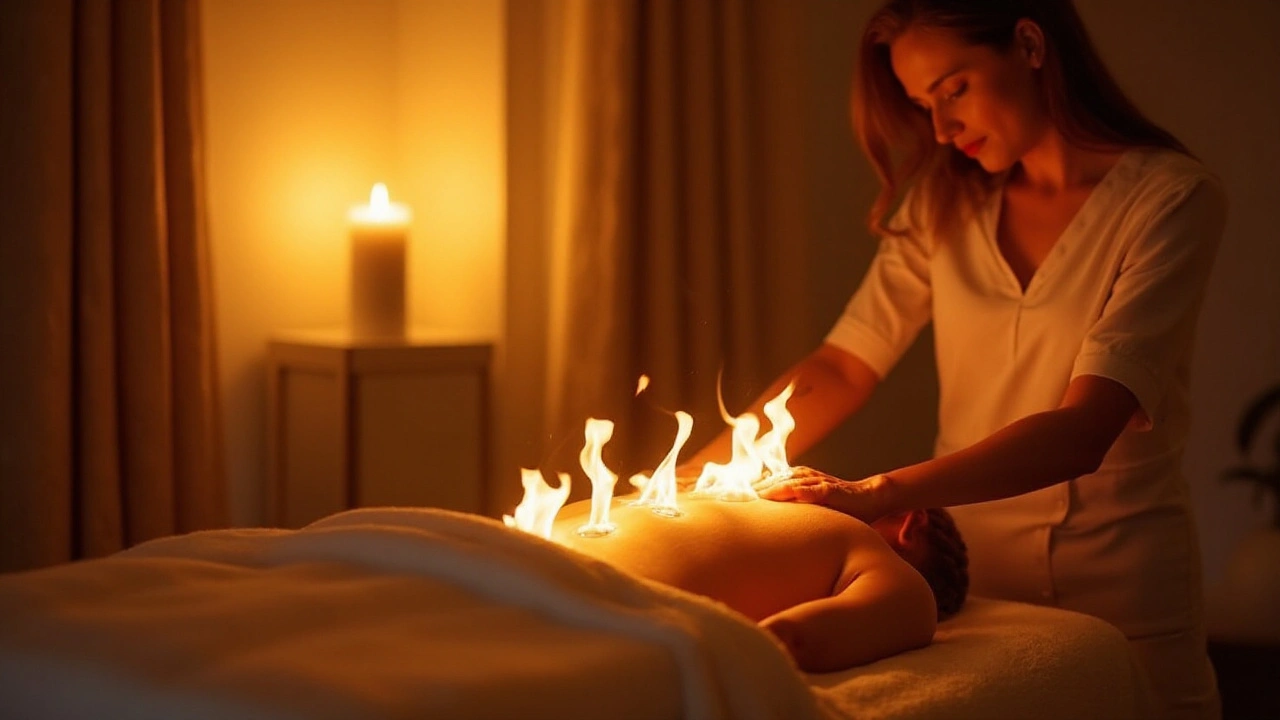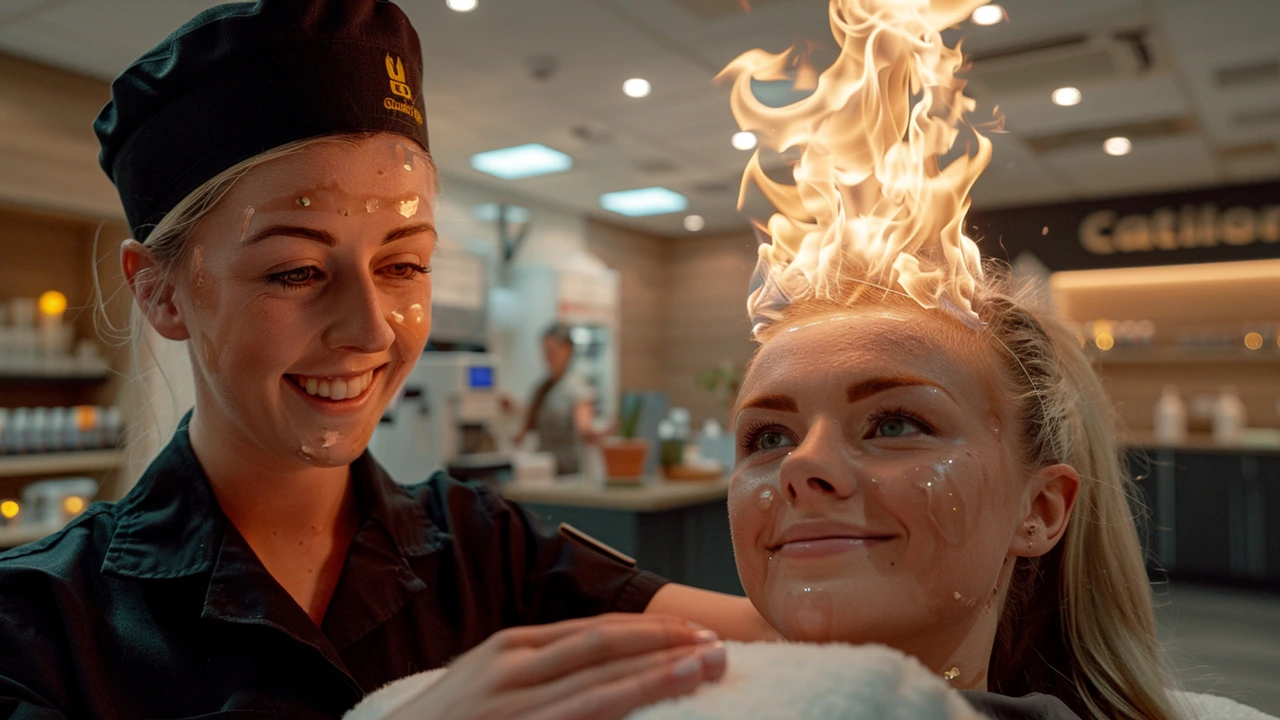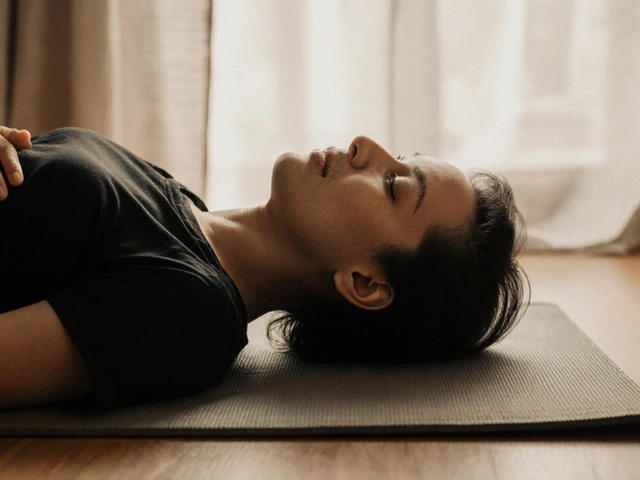Fire Massage: What It Is and Why Heat Helps
Ever felt how warmth melts tension faster than a cold compress? Fire massage uses controlled heat—via heated stones, warm oils, or traditional fire-cupping techniques—to loosen tight muscles, increase circulation, and calm the nervous system. It’s not a gimmick. Heat changes tissue stiffness and helps hands reach deeper without extra force.
Fire massage can mean different things depending on the therapist. Some use hot basalt stones placed along muscle lines. Others use a skilled, brief flame to warm oil or activate special cups (fire cupping) that lift tissue to release tight spots. The common goal is the same: targeted heat to speed relief.
What to expect in a session
When you book, tell the therapist about meds, skin issues, pregnancy, or blood-clotting problems. Expect the room to smell of oil, soft music, and a brief skin test for temperature. A typical session mixes hands-on massage with heated tools placed on specific muscles. Heat is applied, held, then moved or replaced—never left too long. If cupping is used, you might see round marks that fade in a few days.
How it feels: warm, deeply relaxing, and often less painful than heavy pressure. Many people report faster release of knots and better sleep after a heat-based session. If at any point the heat feels sharp or burning, speak up—good therapists adjust immediately.
Safety, risks, and aftercare
Heat is helpful but can burn. Avoid fire massage if you have open wounds, severe varicose veins, uncontrolled diabetes, fever, or certain heart issues. People on blood thinners or with fragile skin should get clearance from a doctor first. Always choose a licensed practitioner who uses clean tools and follows clear safety routines.
Aftercare is simple: hydrate well, avoid intense exercise for the rest of the day, and skip hot tubs or sauna until any redness calms. If you get temporary reddened patches from cupping, keep the area clean and moisturized. Use a cool compress only if you feel any lingering excessive heat or tenderness.
Want to try fire-style heat but nervous about extremes? Ask for a milder session—many therapists can mimic the effect with warm stones or towels before using stronger techniques. Compare warm stone massage and stone therapy options if you prefer steady heat without cupping marks.
Picking a therapist: check reviews, ask about training in heat techniques, and confirm insurance and hygiene practices. A short phone call can tell you a lot—do they explain risks, ask about health history, and describe what they’ll do?
Fire massage can speed recovery, ease chronic tightness, and feel deeply restorative when done right. If you’re curious, start slow, communicate clearly, and pick a trained practitioner. You’ll likely leave looser, calmer, and surprised how much a little heat helps.

Rediscover Wellness: The Benefits of Fire Massage Therapy
Fire massage therapy is an unconventional yet effective method of relaxation and healing that combines traditional massage techniques with the use of controlled flames. This article delves into the basics of fire massage, its benefits, safety measures, and tips for those considering this unique experience.

The Surprising Surge of Fire Massage in Wellness Circles
Fire massage is the latest trend catching everyone's attention in the wellness community. This ancient therapeutic technique involves using controlled flames to release tension and heal the body. Learn about the benefits, the safety measures, and why people are raving about this unique massage experience.
Categories
- Health and Wellness (148)
- Alternative Therapies (86)
- Massage Therapy (40)
- Travel and Culture (15)
- Beauty and Skincare (9)
- Holistic Health (8)
- Health and Fitness (5)
- Spirituality (5)
- Other (2)
- Personal Development (2)



